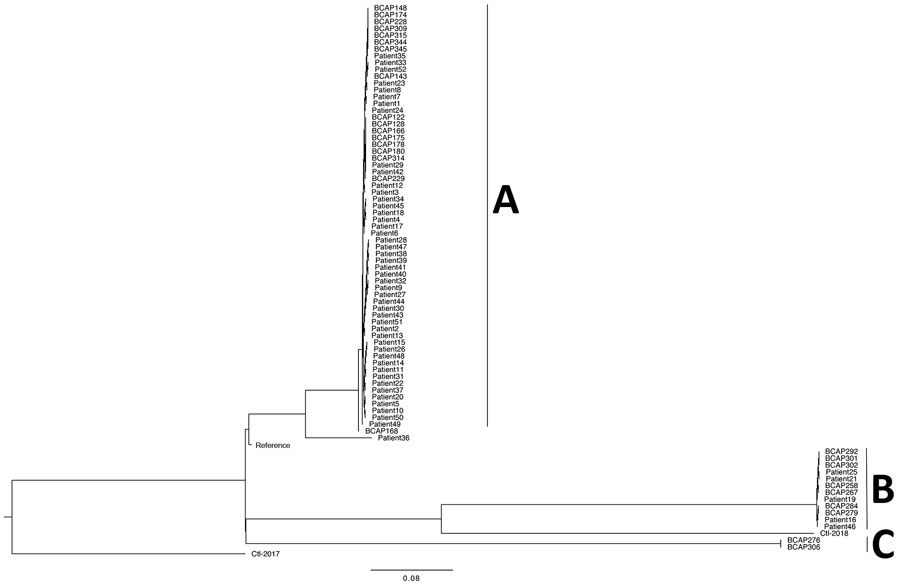Volume 26, Number 9—September 2020
Synopsis
Polyclonal Burkholderia cepacia Complex Outbreak in Peritoneal Dialysis Patients Caused by Contaminated Aqueous Chlorhexidine
Figure 3

Figure 3. Maximum-likelihood phylogenetic tree of 80 Burkholderia cepacia complex isolates based on single-nucleotide polymorphisms, Hong Kong, China. A, B, and C indicate clusters. Scale bar indicates nucleotide substitutions per site.
1Current affiliation: Queen Elizabeth Hospital, Hong Kong, China.
2These senior authors contributed equally to this article.
Page created: May 12, 2020
Page updated: August 18, 2020
Page reviewed: August 18, 2020
The conclusions, findings, and opinions expressed by authors contributing to this journal do not necessarily reflect the official position of the U.S. Department of Health and Human Services, the Public Health Service, the Centers for Disease Control and Prevention, or the authors' affiliated institutions. Use of trade names is for identification only and does not imply endorsement by any of the groups named above.